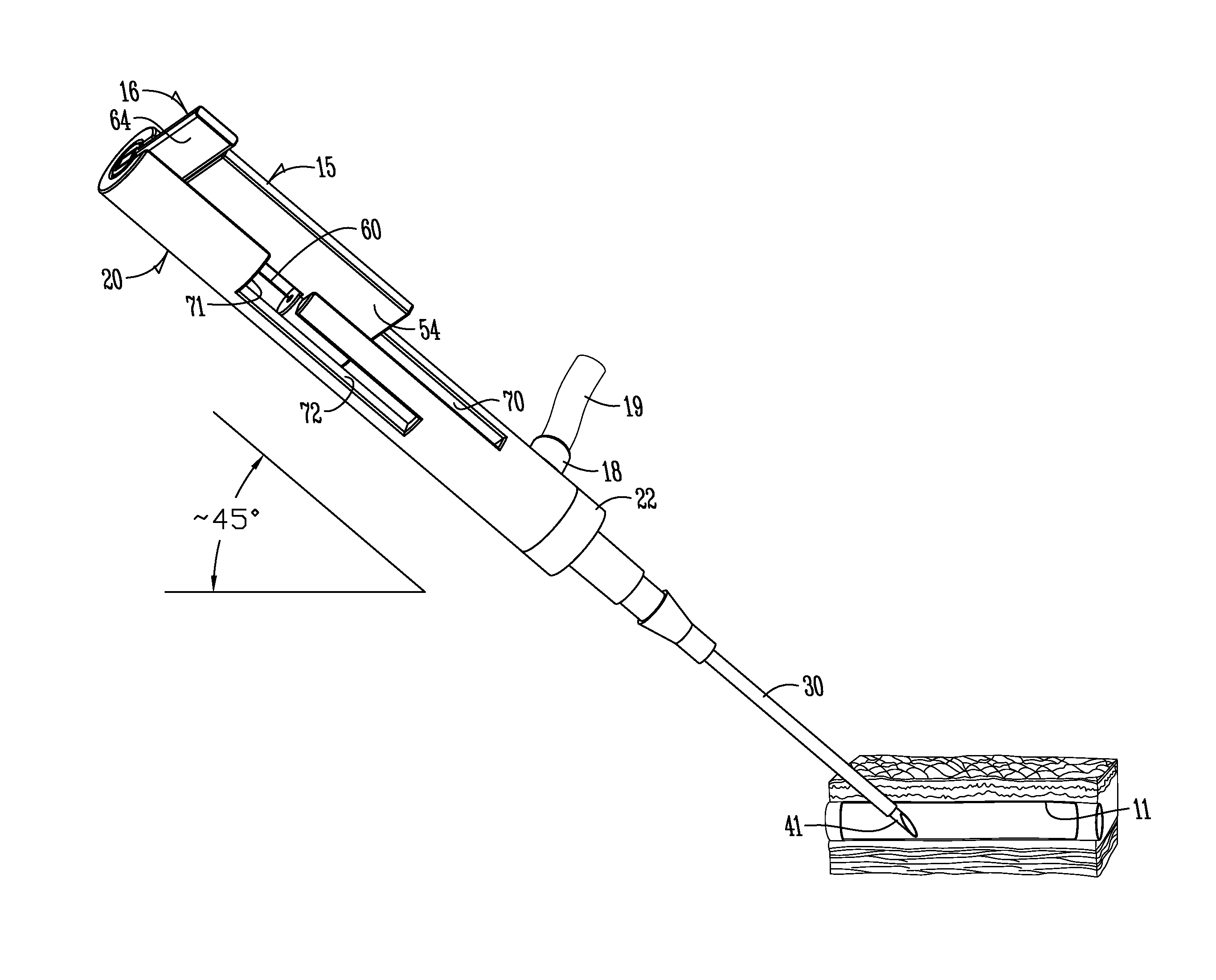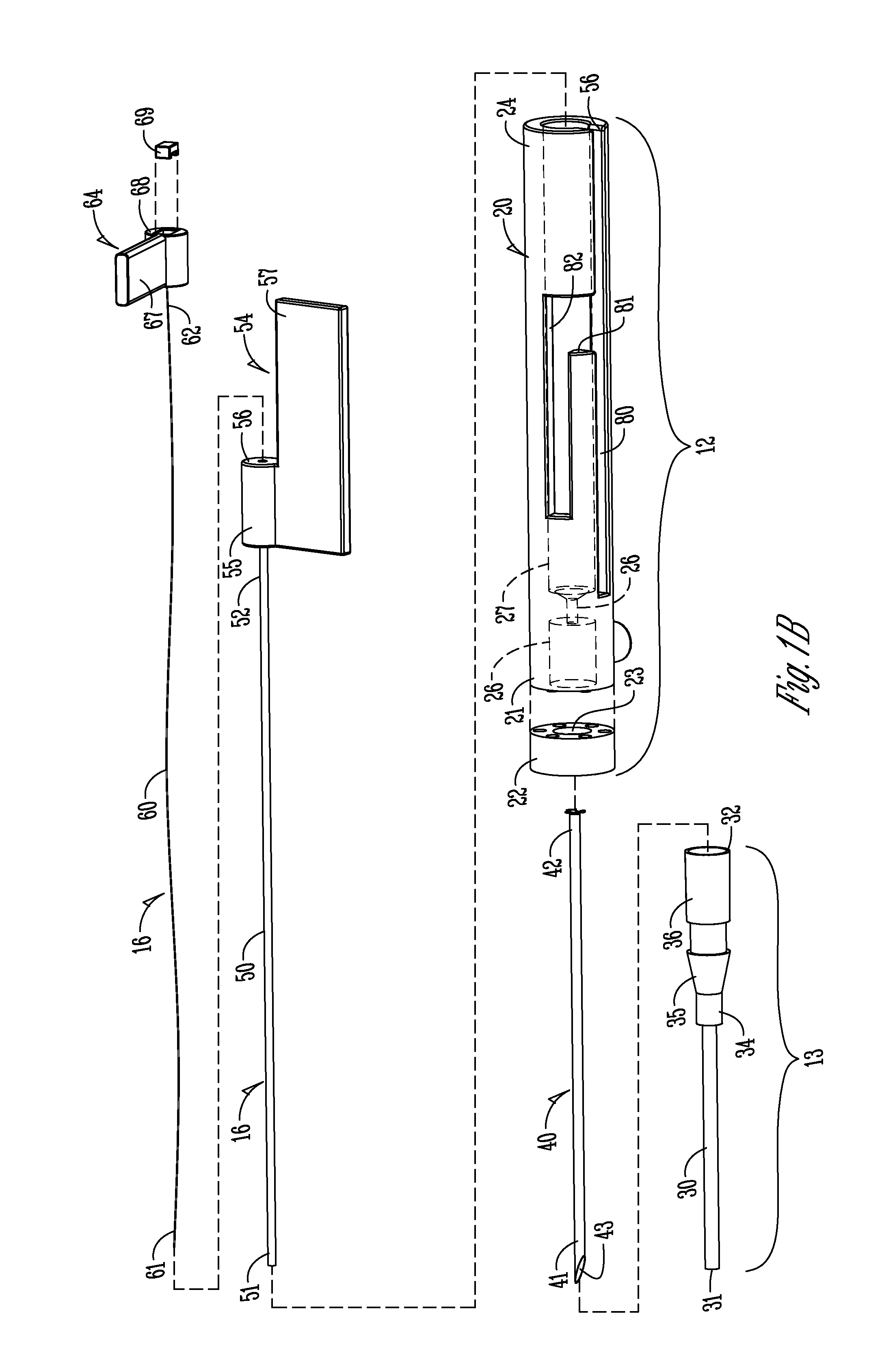Catheter assembly with segmented stabilization system
a catheter and stabilization system technology, applied in the field of catheters, can solve the problems of difficult finding substandard veins, many wasted devices, and difficulty in procedures, and achieve the effect of reducing the likelihood of repeated vein punctures for patients and associated effects
- Summary
- Abstract
- Description
- Claims
- Application Information
AI Technical Summary
Benefits of technology
Problems solved by technology
Method used
Image
Examples
exemplary embodiment three
[0116]FIGS. 9A and B show, in similar form to FIGS. 8A and 8B, a further alternative embodiment 10″ of the invention. It functions essentially like the embodiment of FIGS. 8A and 8B with the following additional feature.
[0117]This embodiment shows that further deployable and retractable members are possible. In one example, an additional slider 44′ could be connected to some other type of sheath or cannula that could be slid over hollow stabilizing component 50′ and selectively moved forwardly or distally. It could simply be a catheter sheath.
[0118]However, an alternative possibility exists. Second U-shaped slider 44′ could be connected to a carriage that slides in the same slot / bore as the carriage portions of slider 64′ and 54′ of FIG. 9A. Slider 44′ could have puncture needle 40′ fixed to it. Thus, the additional feature of this embodiment is that needle 40′ could be independently moved forward relative to handle 20′. Slider 54′ (U-shaped) can also. Slider 44′ can provide a mecha...
PUM
 Login to View More
Login to View More Abstract
Description
Claims
Application Information
 Login to View More
Login to View More - R&D
- Intellectual Property
- Life Sciences
- Materials
- Tech Scout
- Unparalleled Data Quality
- Higher Quality Content
- 60% Fewer Hallucinations
Browse by: Latest US Patents, China's latest patents, Technical Efficacy Thesaurus, Application Domain, Technology Topic, Popular Technical Reports.
© 2025 PatSnap. All rights reserved.Legal|Privacy policy|Modern Slavery Act Transparency Statement|Sitemap|About US| Contact US: help@patsnap.com



